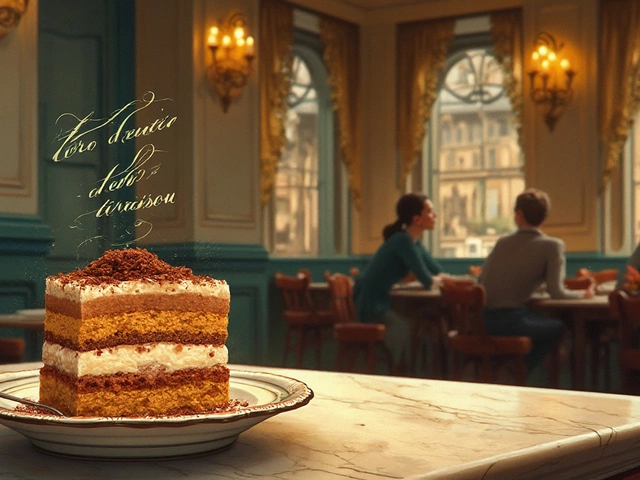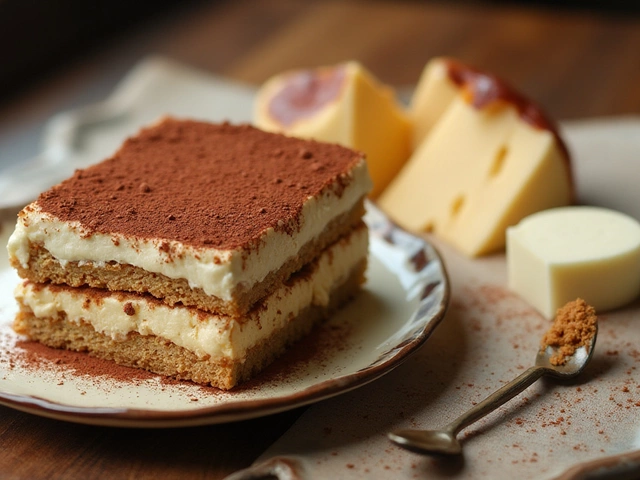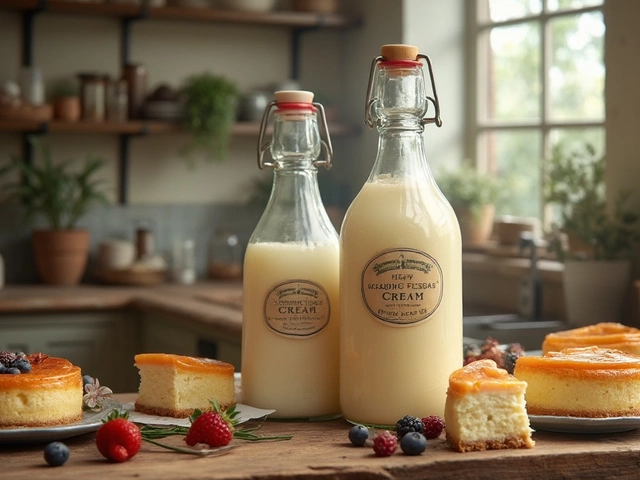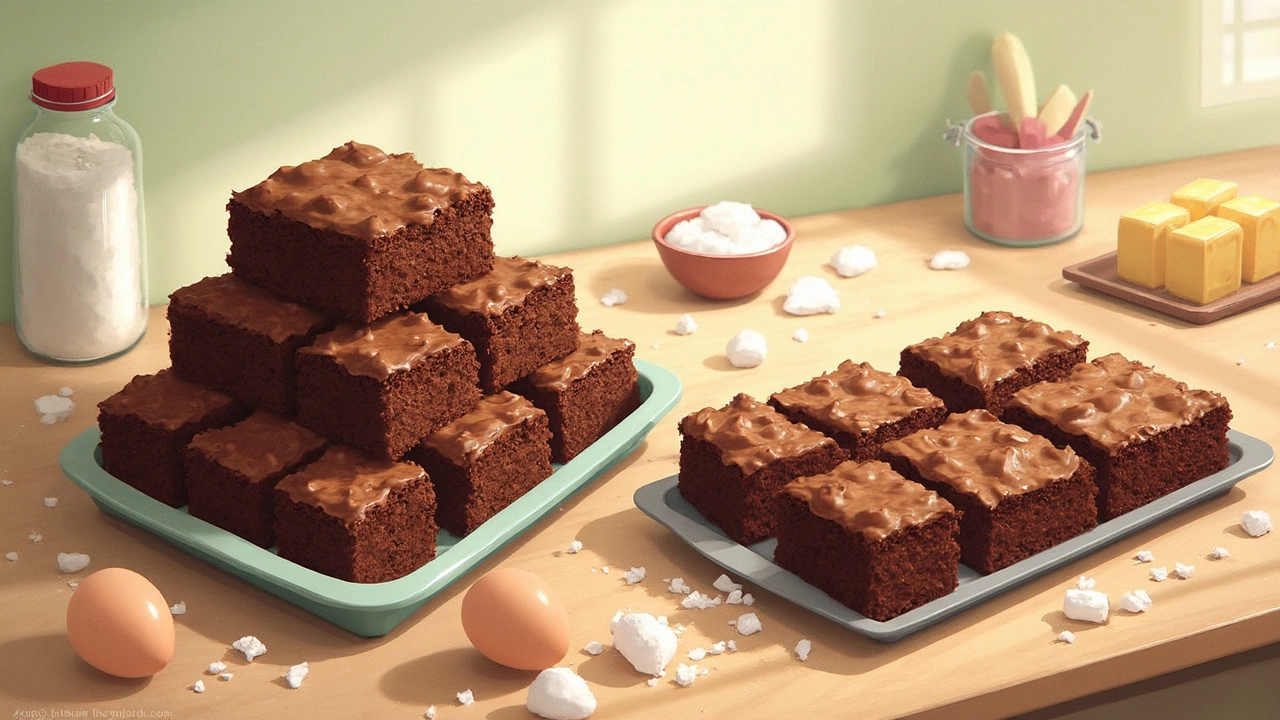
Ever excitedly pulled a pan of brownies from the oven, only to slice in and find... cake? Happens to bakers way more often than you’d think. Those box mixes tease us, but the wrong ingredient ratio at home can leave you reaching for a fork instead of just a napkin. So, why do brownies sometimes taste like, well, cake?
This isn’t some baking crime—it’s all about the little details people overlook. A cake-like brownie usually comes from adding too much flour, using more baking powder, or whipping in more air than necessary. You’re trying for dense and fudgy, but the end result is fluffy and risen, like you’ve baked a thin chocolate sponge layer by accident.
If you’re frustrated about missing that classic chewy texture, you’re not alone. Fixing this comes down to understanding how each ingredient shifts things, so you get exactly what you’re craving the next time you pick up a spatula. Stay tuned—it’s way simpler than you think to control the outcome.
- Brownie vs. Cake: The Texture Showdown
- Why Brownies Go Cake-Like: The Culprits
- How Flour Tips the Scale
- Eggs & Leavening: Little Tweaks, Big Results
- Milk, Oil, and Mixing Habits
- How to Get Your Ideal Brownie Texture
Brownie vs. Cake: The Texture Showdown
Biting into a brownie and biting into cake delivers two totally different experiences, even though both are chocolatey treats. The secret’s in the texture. Brownies are famous for being chewy, dense, and rich—almost fudge-like. Cake, on the other hand, is light, airy, and fluffy, holding together less tightly and almost melting away in your mouth.
The reason for this difference boils down to the balance of fat, sugar, flour, eggs, and how they’re mixed. Take a look at what you’ll notice when you compare the two:
| Characteristic | Classic Brownie | Chocolate Cake |
|---|---|---|
| Texture | Dense, sometimes fudgy or chewy | Airy, light, and spongy |
| Fat Content | High (butter or oil) | Lower (often less butter or uses milk) |
| Flour Amount | Lower | Higher |
| Eggs | Fewer | More for lift |
| Leavening Agent | Usually none or very little | Baking powder or soda for rise |
Brownie texture stands out because of that extra fat and less flour, which locks in moisture and makes them soft and dense instead of fluffy. Cakes use more flour and leavening agents, so you end up with those little air pockets throughout. That's why when you turn a brownie recipe into a cake by adding more flour or whisking too much air into the eggs, you end up with something that doesn’t quite hit the brownie craving spot.
If you bake often, it pays to pay close attention to the texture you’re after. Start with the right recipe for the outcome you want: more flour and baking powder equals more cake-like; extra butter or oil and less flour gives you that true brownie bite.
Why Brownies Go Cake-Like: The Culprits
If your brownies always end up tasting like cake, you’re not cursed. There’s some clear baking science behind it. The texture shift happens when the wrong things get tossed in, or simply too much of the right things. Let’s break down what’s causing it.
First up, flour. Adding just a little too much flour can send brownies straight to the cake zone. Flour makes the batter stiffer and gives that crumbly structure most people look for in cake. Brownies only need enough flour to hold them together, not enough to build layers you’d frost.
Another big culprit? Baking powder or baking soda. Most classic brownie recipes actually skip leaveners altogether, because the goal is a dense bite. When you do add leavener, you trap more air, which causes the brownies to puff up and taste lighter—just like a cake.
How about eggs? Too many eggs, or beating them in for longer than a minute or two, whips in a lot of air. This air makes the brownies rise and get that sponge-like feel. Most recipes that call for cake-like brownies will use more eggs (or even a combo of yolks and whole eggs) to boost lift.
The fat you choose matters too. Cakes use oil or more milk, but brownies get their rich texture from butter and melted chocolate, which help keep things dense. Swapping for oil or adding a splash of milk lightens the batter up.
- Too much flour leads to cake-like brownies
- Leaveners like baking powder will make brownies rise (avoid for dense brownies)
- Extra or overbeaten eggs aerate the batter
- Swapping out butter for oil or adding milk makes things fluffier
So, if you want your brownie texture to stay chewy and fudgy, watch each small tweak. Even throwing ingredients together in a different order or beating the batter too much can tip the scales toward cake territory. Paying attention now saves you from dessert disappointment later.
How Flour Tips the Scale
Getting the texture of your brownies just right comes down to how much flour you use. Adding more flour is the fastest way to push brownies from gooey and dense to fluffy and cake-like. Less flour means a moister, richer bite; more flour and you’re looking at something with an airier crumb that’s closer to cake than a chewy square.
"The key difference between a fudgy brownie and a cake-like one usually comes down to flour. More flour equals more structure, which makes for a lighter, spongier texture," says Stella Parks, pastry chef and author of 'BraveTart.'
Why does flour make such a difference? Flour contains protein, which forms gluten as you mix the batter. That gluten is what gives baked goods their structure. In brownies, too much structure is the enemy of fudgy texture. Use just enough to hold everything together—going overboard is what turns your brownie into a mini chocolate cake.
| Flour Amount (per 8x8 pan) | Texture Result |
|---|---|
| 1/2 cup | Very fudgy, dense |
| 3/4 cup | Soft, slightly chewy |
| 1 cup | Cake-like, fluffy |
Most classic recipes asking for a cup or more of flour will leave you with a brownie that won’t satisfy fudgy lovers. If you want a denser, richer bite, try dropping the flour in your recipe by about 1/4 cup and see the difference next time.
- Spoon and level: Don’t scoop from the bag—flour packs easily, and you'll accidentally add more than you meant to.
- If you’re switching from all-purpose to cake flour, keep in mind cake flour absorbs differently and may make brownies even softer (and not in a good way).
In short: Flour calls the shots on whether you get cake or brownie. That simple.
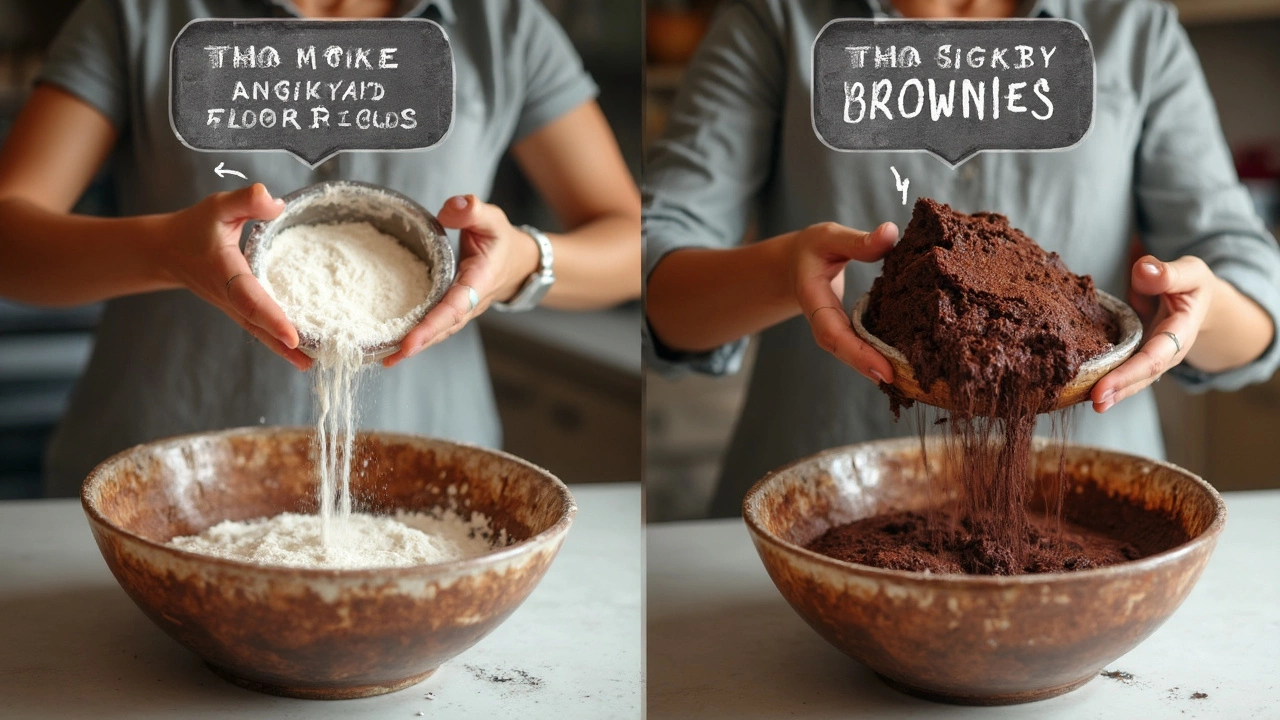
Eggs & Leavening: Little Tweaks, Big Results
Eggs aren’t just there to hold brownies together. They’re the secret to the texture you get, whether that’s rich and chewy or tall and airy. Want to know why? Eggs help trap air when you beat them. More eggs, or extra beating, means more lift—and suddenly you’re in cake territory instead of classic brownie land.
Leavening agents like baking powder (and sometimes baking soda) are the main difference between dense brownies and those that surprise you with a fluffy bite. Most traditional brownie recipes skip baking powder or use just a pinch, while cake-style brownies call for as much as a full teaspoon per batch. That tiny amount changes everything.
Check out this quick comparison of common egg and leavening amounts in different brownie styles:
| Style | Eggs (per 8x8 pan) | Baking Powder |
|---|---|---|
| Fudgy Brownies | 2 | 0 tsp |
| Classic Brownies | 2–3 | 0–1/4 tsp |
| Cake-like Brownies | 3–4 | 1 tsp |
If you love thick brownies, use fewer eggs and skip the baking powder. Love that cakey spring? An extra egg and more leavening are key.
Quick tips:
- Don’t overbeat your eggs—unless you want more rise in your brownies.
- Stick to the recipe if you want a classic result. Swapping even one egg can turn the texture upside down.
- If your brownies always seem too light and you want fudge, check if your recipe sneaks in baking powder.
Those little tweaks with eggs and leaveners really do all the heavy lifting in the battle of brownie vs. cake.
Milk, Oil, and Mixing Habits
Milk and oil can make or break that classic brownie texture. If you toss milk into the batter, those brownies get fluffier, leaning toward cake territory. Why? Milk adds extra moisture and helps activate the flour’s proteins, causing more rise. That means more air pockets—the opposite of a rich, dense bite.
When it comes to oil, here’s the trick. Using oil instead of butter makes brownies super moist, which is awesome. But pour too much in, and the brownies start tasting greasy and lose their structure. Plus, if a recipe calls for both oil and milk, you’re walking straight into cake-like brownie land.
Your mixing technique matters just as much. Over-mixing the batter whips in loads of air. More air equals a lighter crumb, which is perfect for cake but not brownie lovers chasing that fudge factor. If you want dense squares, gently fold the wet and dry ingredients just until combined—no electric beaters necessary. Stirring too long is a common reason brownies lose their fudgy soul and turn out airy.
- Want cakey brownies? Use both milk and oil and mix longer.
- Want fudgy brownies? Stick to melted butter or oil, skip the milk, and stir the batter gently and briefly.
So, next time you whip up a batch, keep an eye on these little details. Small changes here can mean the difference between a chewy treat and a chocolate sponge.
How to Get Your Ideal Brownie Texture
Nailing that perfect brownie isn't about crossing your fingers—it's about what you do before the batter hits the oven. To get your dream texture—whether that’s gooey, chewy, or cake-like—you’ll have to tweak a few basic things. It’s all in the ratios, how you mix things, and a little bit in the baking time.
If you want truly fudgy brownies (the kind you almost need a glass of milk for), you’ll want more fat relative to flour and sugar. That’s why classic recipes pack in melted chocolate or lots of butter, and go easy on things like baking powder. Brownie fans often swear by ignoring leavening agents altogether.
- More Flour: Drier and cakier texture. Try adding only what the recipe calls for—measuring by weight helps.
- Less Flour and More Butter: Fudgier and more moist. Don’t skip the eggs either, but avoid over-mixing them or you’ll whip in excess air.
- Baking Powder: Makes brownies puff up, so omit if you like them dense.
- Sugar Ratio: More sugar boosts chewiness and helps that crackly top.
As for oven time, slightly under-baking gives you gooier brownies. Test with a toothpick—a little moist crumb means you’re on the right track. If you pull out a clean skewer, they’re already on their way to being cake.
"For fudgy brownies, use melted chocolate for richness, don’t overbake, and avoid adding too much flour. Less air means a denser bite." — Alice Medrich, award-winning pastry chef, in her book 'Seriously Bitter Sweet'
Still can’t get the texture you want? Check out this cheat sheet for common tweaks:
| Texture | Main Adjustments | Bake Time |
|---|---|---|
| Fudgy | More butter, less flour, no baking powder | Shorter (24–28 min) |
| Chewy | Equal parts white/brown sugar, more eggs, little baking powder | Medium (28–32 min) |
| Cake-like | More flour, some baking powder, less fat | Longer (32–35 min) |
Browning edges and a still-slightly-wobbly center is your visual cue to take brownies out of the oven. Let them cool—yes, that’s the hardest part—so they set up right. Bottom line: precision and knowing what each ingredient does lets you dial in the exact texture you’re craving every time.


